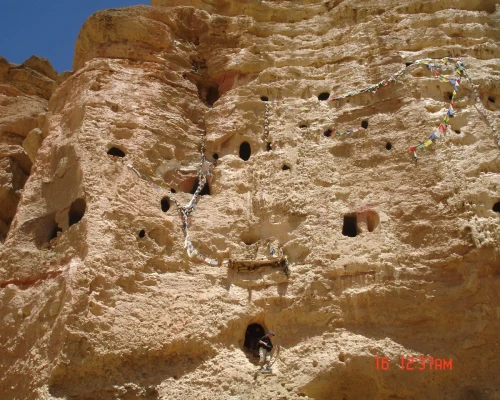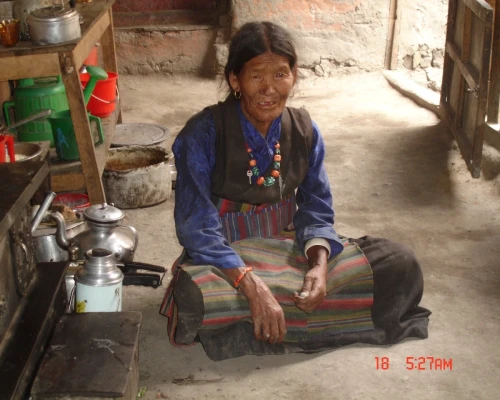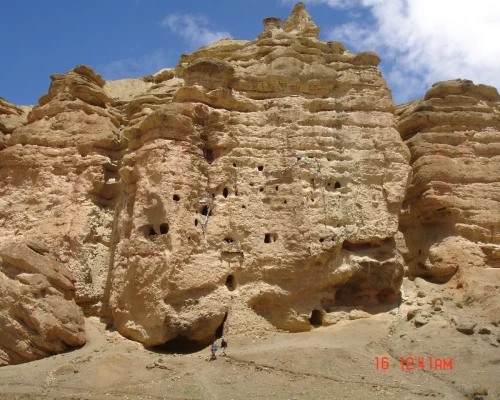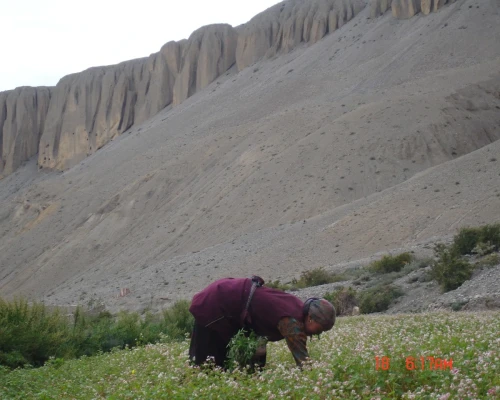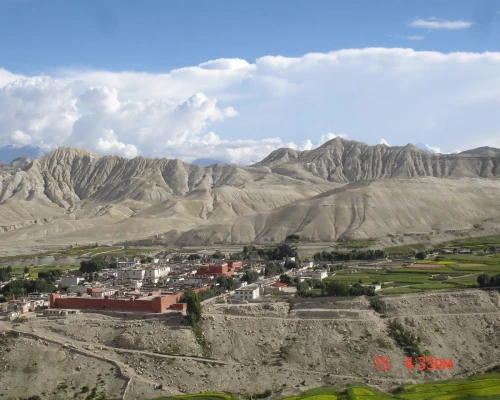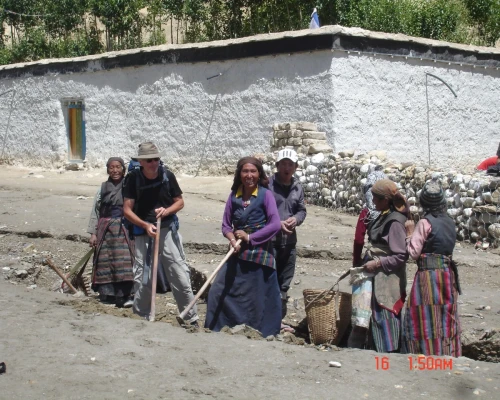Upper Mustang Trek Overview
The Upper Mustang Trek for 17 days is a rare chance to explore a part of Nepal that feels completely different from anywhere else. This region, once a separate kingdom, lies in the rain-shadow of the Annapurna and Dhaulagiri ranges and offers a dry, wide, and deeply spiritual landscape.
Your journey begins with your arrival in Kathmandu, where you will spend your first day settling in and exploring some of the valley’s cultural landmarks. After a short drive to Pokhara, you will take a scenic flight to Jomsom, the starting point of the trek. From there, you begin walking toward Kagbeni, a beautiful village that marks the gateway to Upper Mustang.
As the trek unfolds, you will move through timeless villages like Chele, Syangboche, Ghami, and Tsarang. Each day brings something new red cliffs, carved caves, ancient monasteries, and quiet stone paths lined with prayer flags. You’ll walk gently upward, with plenty of time to adjust to the altitude, and soak in the silence of this remote land.
Reaching Lo Manthang, the old walled capital of Mustang, is one of the most special moments of the journey. The town is calm, peaceful, and full of stories. You will have a full day to explore its narrow lanes, visit age-old temples, and discover nearby cave dwellings tucked into the cliffs.
On the way back, the trail takes you through different villages like Dhamkar, Samar, and Chhuksang, giving you a fresh perspective on the return route. You’ll end the walk in Jomsom, then fly back to Pokhara where you can relax by the lakeside before returning to Kathmandu.
This trek is about more than just walking. It is about meeting kind people, learning from a culture that still lives close to its roots, and enjoying the quiet rhythm of a place that few travelers get to see. With a reasonable pace, comfortable teahouses, and lots of opportunities to pause and take it all in, the Upper Mustang Trek is perfect for anyone looking for something deeper than a mountain view.
What makes the Upper Mustang Trek unique compared to other treks in Nepal?
The Upper Mustang Trek offers something very different from the usual trekking experience in Nepal. Instead of walking through green forests or busy mountain trails, you find yourself in a dry and open landscape that feels quiet, peaceful, and almost untouched.
What makes it truly unique is the culture. Upper Mustang was once its own kingdom, and it still feels that way. The people follow Tibetan Buddhist traditions, and many still live in the same way their ancestors did. You will pass through small stone villages where life moves slowly. Prayer flags flutter in the wind, and old monasteries sit quietly on the hills.
One of the most special places you will visit is Lo Manthang, a walled city near the border with Tibet. The town is full of history and character. You can explore narrow alleyways, meet locals, and visit ancient temples that are still in use today.
This trek is more than just a walk. It’s a chance to experience a part of Nepal that very few people get to see. The mix of quiet trails, dramatic landscapes, and deep cultural roots makes the Upper Mustang Trek stand out from any other trek in Nepal.
How long will you trek on the Upper Mustang Route?
The Upper Mustang Trek usually covers around 130 to 160 km in total, depending on the exact route and side trips you take. Over 17 days, the daily walking distance is well-paced, with most days involving around 5 to 7 hours of walking.
The trail takes you from Jomsom all the way to Lo Manthang and back, passing through several traditional villages and open landscapes along the way. The terrain isn’t too steep or technical, but since it’s a high-altitude region, the walk can still feel challenging at times.
Even though the distance may seem long, the trek is designed with rest days and gentle climbs. You will have enough time to enjoy the views, explore local culture, and adjust to the altitude comfortably.
If you are reasonably fit and used to walking, the distance is very doable. Just take it slow, stay hydrated, and enjoy each day as it comes.
Is the Upper Mustang Trek Difficult?
The Upper Mustang Trek is considered moderate in terms of difficulty. You don’t need to be a highly experienced trekker, but you should be comfortable walking for several hours a day at high altitude.
The trails are not very steep or technical. Most of the walking is on dry, open paths with gradual ups and downs. However, since you are trekking at altitudes between 2,800 and 4,200 meters, the thin air can make even simple climbs feel harder. It helps to go slow, take breaks, and listen to your body.
One thing to keep in mind is the dry and dusty climate. The sun can be strong during the day, and it gets cold at night, especially in the higher villages. Good sun protection and warm layers are important.
Overall, if you have a basic level of fitness and some hiking experience, you can do this trek comfortably. Many people who are new to high-altitude trekking choose Upper Mustang because of its gentler terrain and rich cultural experience.
Taking your time, staying hydrated, and preparing properly will make a big difference. And remember, you don’t have to rush, this is a journey to enjoy, not a race.
What is the maximum altitude reached during the Upper Mustang Trek?
During the Upper Mustang Trek, the highest point you will reach is around 4,200 meters (13,780 feet). This is usually near Chogo La Pass, one of the scenic high points on the way to or from Lo Manthang.
While this altitude is high, it’s not extreme compared to some other treks in Nepal. The route is planned in a way that gives your body time to adjust slowly. Most of the villages where you stay overnight are between 2,800 and 3,800 meters, which helps reduce the risk of altitude sickness.
You don’t need any special climbing skills to reach this height. The trails are walkable, and the pace is steady. Just take your time, drink plenty of water, and rest when needed. Your guide will also keep an eye on how everyone is feeling along the way.
Reaching this altitude feels rewarding, the air is crisp, the views are wide and silent, and you get a real sense of being in a remote and special place.


